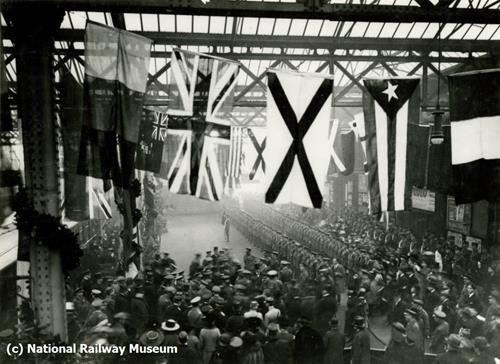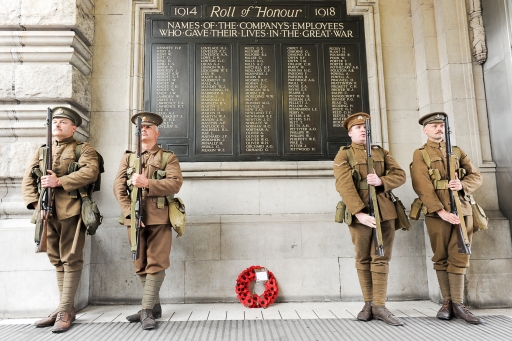The story of the vital role played by Britain’s railways in moving troops to the Front at the start of the First World is being told in an exhibition which will tour major UK stations.
It opened at Waterloo Station in London on August 10th 2014, the 100th anniversary of the first soldiers arriving at the capital’s stations on their way to the south coast and ferries to France.
The Khaki Chums (members of the Association of Military Remembrance) marked the occasion with a march through Waterloo, to pay their respects to those who stood in their shoes a century ago, before boarding a train to Southampton.
Over a period of three weeks in 1914, a troop train would arrive at Southampton Docks every 12 minutes during the course of a 14-hour day.
The travelling exhibition uses original photographs, documents and historical facts to bring to life the achievements of the railway in helping mobilise hundreds of thousands of troops and tonnes of equipment.
It also tells the story of the women who kept the network running while men were fighting on the front line, sowing the seeds of social change in the process.
By August 31st 1914, trains to Southampton had transported:
*more than 118,000 army personnel
*37,000 horses
*314 guns
*5,200 vehicles
*1,800 bicycles
*more than 4,500 tons of baggage
 (Photo: © National Railway Museum)
(Photo: © National Railway Museum)
The exhibition has been produced by the Rail Delivery Group, which brings together infrastructure company Network Rail and Britain’s passenger train and freight operators.
Robin Gisby, Network Rail’s Managing Director of Operations, said: “When Britain declared war against Germany in 1914, it was the railway that enabled the rapid mobilisation of British forces and their equipment to France.
“From that point on, rail played a crucial role in the war effort, not just through transportation; stations were places to advertise vital information and feed and welcome home troops on leave or those brought back injured.”
“As Britain commemorates the centenary of the start of the war, there are so many stories but we wanted to make sure that those railway workers who fought abroad and worked at home were remembered and their story told to a new generation of rail staff and passengers alike.”
The exhibition will remain at Waterloo until September 9th 2014 before touring five of the UK’s biggest stations over the next year. It will then be redesigned each summer with a new theme relating to the railways’ war effort from 100 years before.
Source: Network Rail
Images courtesy of Network Rail and the National Railway Museum
Posted by: Peter Alhadeff, Centenary News
